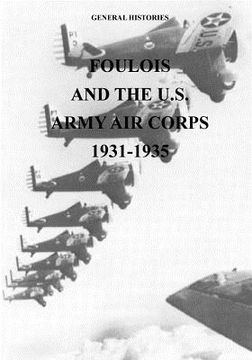Foulois and the U.S. Army Air Corps 1931-1935 (en Inglés)
Reseña del libro "Foulois and the U.S. Army Air Corps 1931-1935 (en Inglés)"
Few nations in modern times have been prepared for war. Even the aggressors who have initiated conflicts have not been fully ready, for they could never be certain how their victims would react or what the clash of arms would bring. Nor, since the industrial revolution of the 19th century accelerated the pace of technological change, could a nation predict the impact of new weapons on battle and decide upon new tactics and strategies necessary for victory.For most of its history, the United States did not trouble itself deeply with problems of preparing for war. With wide oceans separating it from the major powers of the world, and with a tradition isolating it from the balance of power system which governed international relations, this country could afford a military policy predicated on mobilizing after hostilities had begun. Its small peacetime military and naval establishment was designed for border security, for patrol of distant seas and a vast continental interior, for exploration, and after the dawn of the 20th century, for a cadre and training base which would absorb the manpower and materiel of the nation for wartime armed forces.Beginning late in the 19th century, however, technology began to render such a policy increasingly dangerous. The introduction of steeland steam in ship construction and improvements in naval weaponry pushed the nation into overhauling and expanding the peacetime Navy.While the oceans would still provide a barrier and afford an interval for mobilization, defeat at sea would transform the barrier into a highwayfor invasion. To surrender the command of the sea was perceived by the early 20th century to offer an enemy the opportunity to defeat the United States. Similarly, air power shrank the world and promised as much danger as opportunity to the country in defending itself. Proponents of airpower realized that command of the air by an enemy could lay the nation open to bombardment and perhaps defeat. To prevent such a catastropherequired extensive preparation and much practice, thus prompting the expenditure of considerable resources in peacetime. And yet the nation, in the aftermath of World War I - the "war to end all wars"- saw little need for much spending on the implements of war. And in the 1930s, with the onset of the worst depression in American history, economic theory called for reduced government expenditure. For the pioneers of the American air forces, these were difficult years in a struggleas part of the army to forge the air weapons they believed so strongly would decide future warfare.

